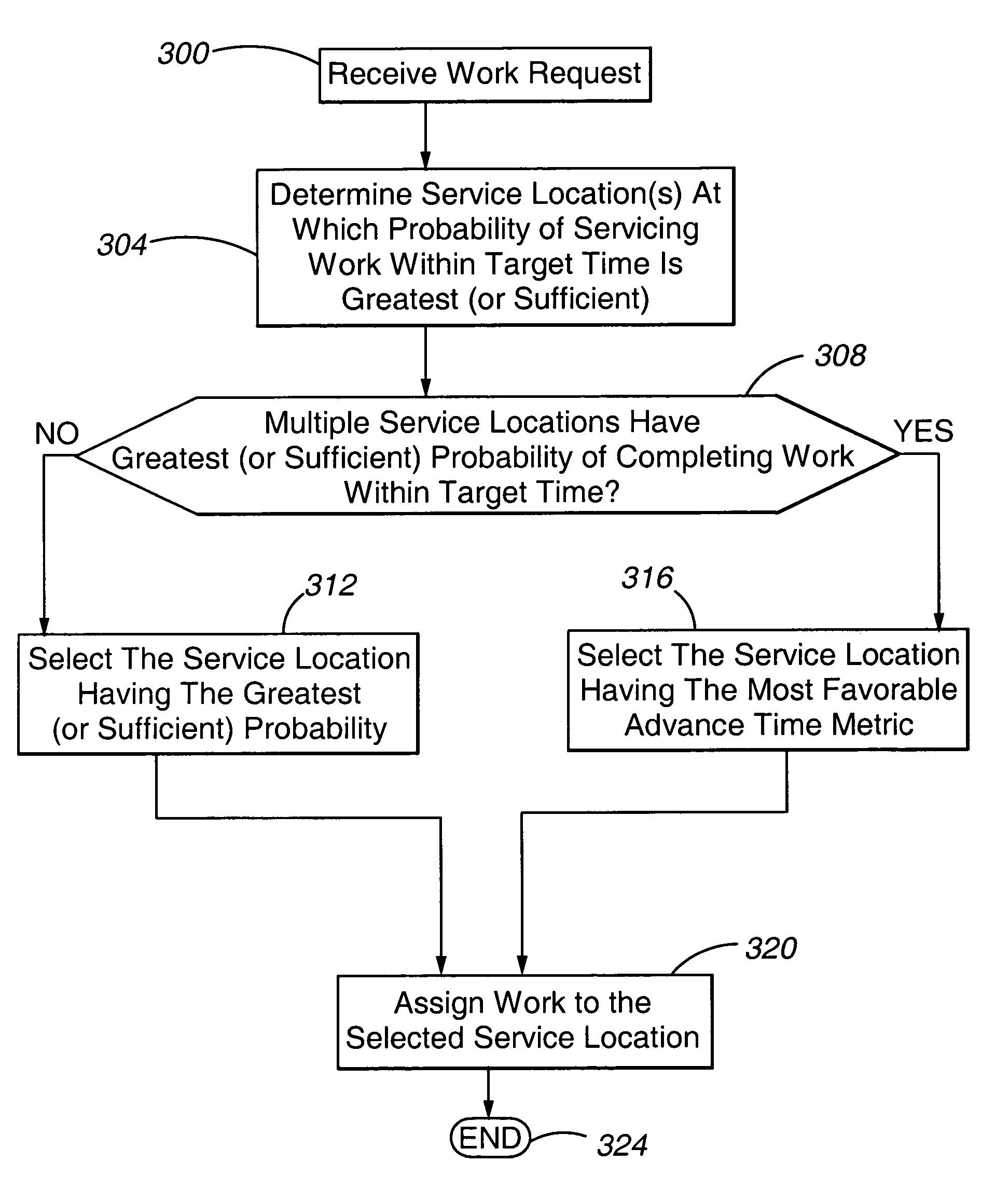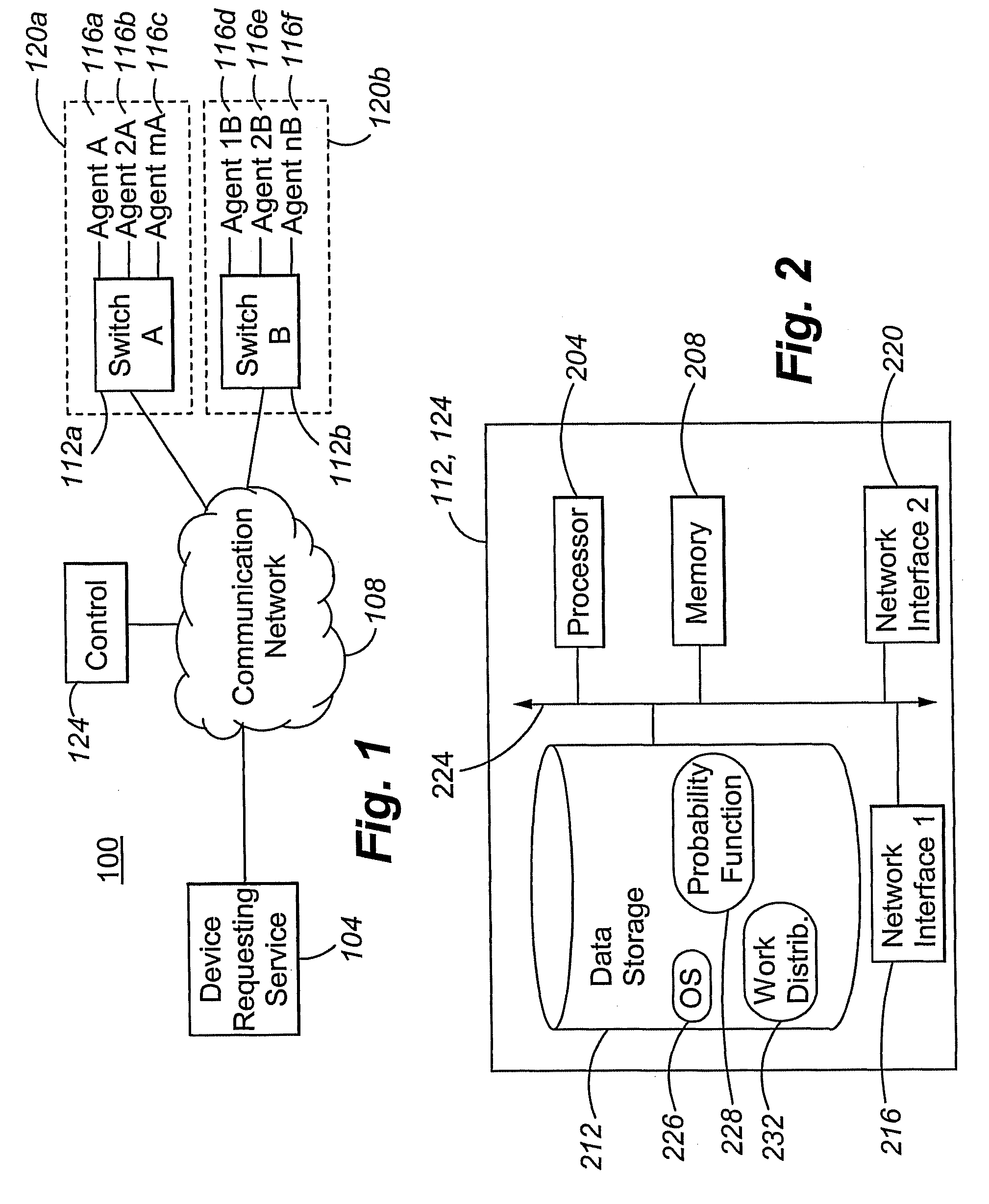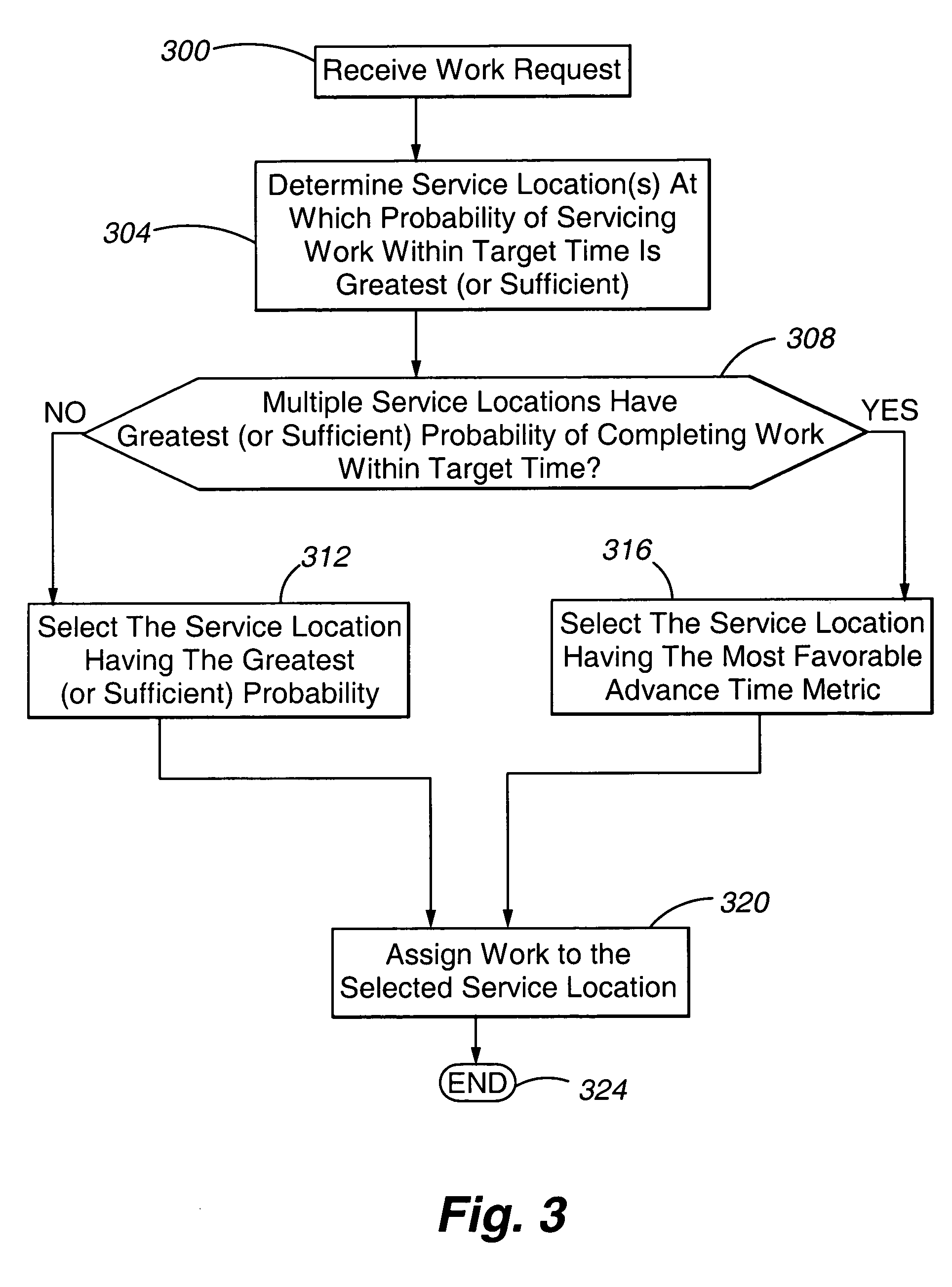Method and apparatus for load balancing work on a network of servers based on the probability of being serviced within a service time goal
a load balancing and network server technology, applied in the field of method and apparatus for load balancing work, can solve the problem that the number of customers not necessarily maximizes the number of customers, and the shortest waiting time for sending calls to the switch, so as to reduce the computational overhead of a method or apparatus
- Summary
- Abstract
- Description
- Claims
- Application Information
AI Technical Summary
Benefits of technology
Problems solved by technology
Method used
Image
Examples
Embodiment Construction
[0015]With reference now to FIG. 1, a communication arrangement incorporating a system 100 in accordance with the present invention is illustrated. In general, the communication arrangement includes a device requesting service 104 interconnected to a communication network 108. The communication network 108 is in turn connected to a number of switches 112. Associated with each switch 112 are one or more resources 116, depicted in FIG. 1 as agents. Collectively, a switch 112 and associated resources 116 comprise a service location 120. In accordance with a further embodiment of the present invention, a service location 120 may comprise a switch 112 and a subset of the associated resources 116 established or functioning as a split. For purposes of this discussion, the term “service location” is understood to include a split. Accordingly, as can be appreciated by one of skill in the art, a system 100 in accordance with the present invention may be beneficially used to allocate requests ...
PUM
 Login to View More
Login to View More Abstract
Description
Claims
Application Information
 Login to View More
Login to View More - R&D
- Intellectual Property
- Life Sciences
- Materials
- Tech Scout
- Unparalleled Data Quality
- Higher Quality Content
- 60% Fewer Hallucinations
Browse by: Latest US Patents, China's latest patents, Technical Efficacy Thesaurus, Application Domain, Technology Topic, Popular Technical Reports.
© 2025 PatSnap. All rights reserved.Legal|Privacy policy|Modern Slavery Act Transparency Statement|Sitemap|About US| Contact US: help@patsnap.com



